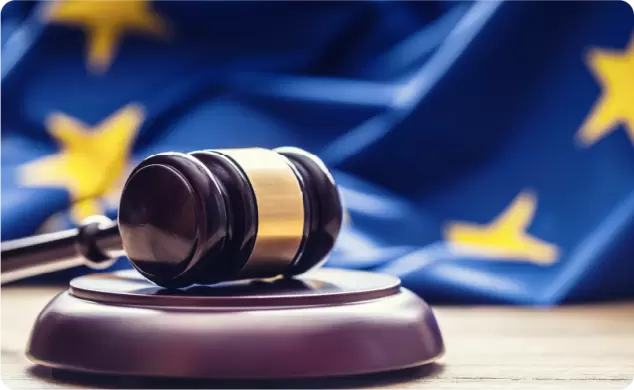New EU battery regulation in force.
- Thu, August 01, 2024
- 3 minute read

Lead batteries face stricter import and distribution rules
The new regulation imposes stricter rules on the importation and distribution of batteries containing lead, including sealed lead acid products. This change is part of an effort to create harmonized legislation for battery sustainability and safety across the EU.
New EU battery rules take effect on August 18, 2024
This new European battery regulation has a long implementation timeline. The next implementation deadline is set to take effect on the 18th of August 2024. On this date batteries that do not conform with the new requirements will no longer be allowed to be imported or distributed into the EU. An example of batteries that do not conform with the new requirements are Sealed Lead-Acid (SLA) batteries.
Batteries to be categorised
The regulation divides batteries into the following five categories:
- Portable battery ≤ 5kg
- Starting, lighting, or ignition batteries in vehicles (SLI)
- Electric vehicle (EV) battery
- Light means of transport (LMT) battery ≤ 25 kg
- Other industrial batteries
Each of these categories have different regulations. If batteries are considered to fall under more than one category, they are considered to belong to the category to which the most stringent requirements apply.
Mandatory electronic battery passports for industrial battery types
Starting February 18, 2027, industrial batteries with a capacity exceeding 2 kWh, EV batteries, and LMT batteries will require individual electronic passports. These passports, accessible via a QR code on the battery, aim to enhance transparency along the supply chain and facilitate information exchange.
Extended battery producer and registration requirements
Extended producer responsibility for batteries and registration obligations already exists in the current battery directive. Extended producer responsibility means that companies that first make batteries available in a member state are responsible for the end-of-life collection and treatment . In the new regulation, the EU introduces new updated targets for collection rates and recycling efficiencies. The extended producer responsibility and registration requirements in the new regulation will apply from August 18, 2025.
New requirements for battery construction
Additionally, the regulation also introduces targets for material recovery of cobalt, copper, lead, lithium and nickel in recycling and treatment facilities of batteries. These targets will start to apply from December 31, 2027. Furthermore, portable batteries should be easily removable and replaceable by the end-user and LMT batteries and cells in LMT batteries should be easily removable and replaceable by an independent professional. This requirement comes into effect on Februrary 18, 2027.
Avoid pre-clearing non-compliant batteries
Some importers may consider "pre-clearing" non-compliant batteries. This is done by providing notifications in advance to customs authorities of an approaching shipment. As a result, these goods may be treated as partially imported based on the date of departure. However, this strategy is not advised as it contradicts the terms and conditions stated in EU regulation 2023/1542.
Existing stock exempted from new battery rules
Batteries ‘placed on the market’ before the implementation dates, do not have to adhere to the new requirements. Article 3 defines ‘placing on the market’ as “the first making available of a battery on the Union market”. ’Making available on the market’ means “any supply of a battery for distribution or use on the Union market in the course of a commercial activity, whether in return for payment or free of charge”. Thus, batteries placed in stock in the Union by distributors, including retailers, wholesalers, and sales divisions of manufacturers, before the date of application of relevant requirements do not need to meet those requirements.
When does a battery enter the EU market?
The situation becomes more complicated regarding goods that are pre-cleared before arriving in Europe but will physically enter the market after the regulation comes into force. The crucial moment is when the batteries are ‘made available for the first time on the Union market’. This is defined as the moment at which they are delivered for distribution, consumption or use within the EU.
Pre-cleared batteries still subject to new rules
Consequently, if batteries have been pre-cleared but have not yet physically arrived in the EU and will only be made available on the market after the regulation is implemented, they must comply with the new regulations. Pre-clearance does not change the date when goods are placed on the market. The moment when goods are placed on the market remains the date when the goods are offered for the first time within the EU market after arrival.
Battery regulation advice and support
Need help regarding the new EU battery regulation? Our Consultancy & Advisory services are here to assist. Contact our customs experts or consult regulation (EU) 2023/1542 for the full legal act.




